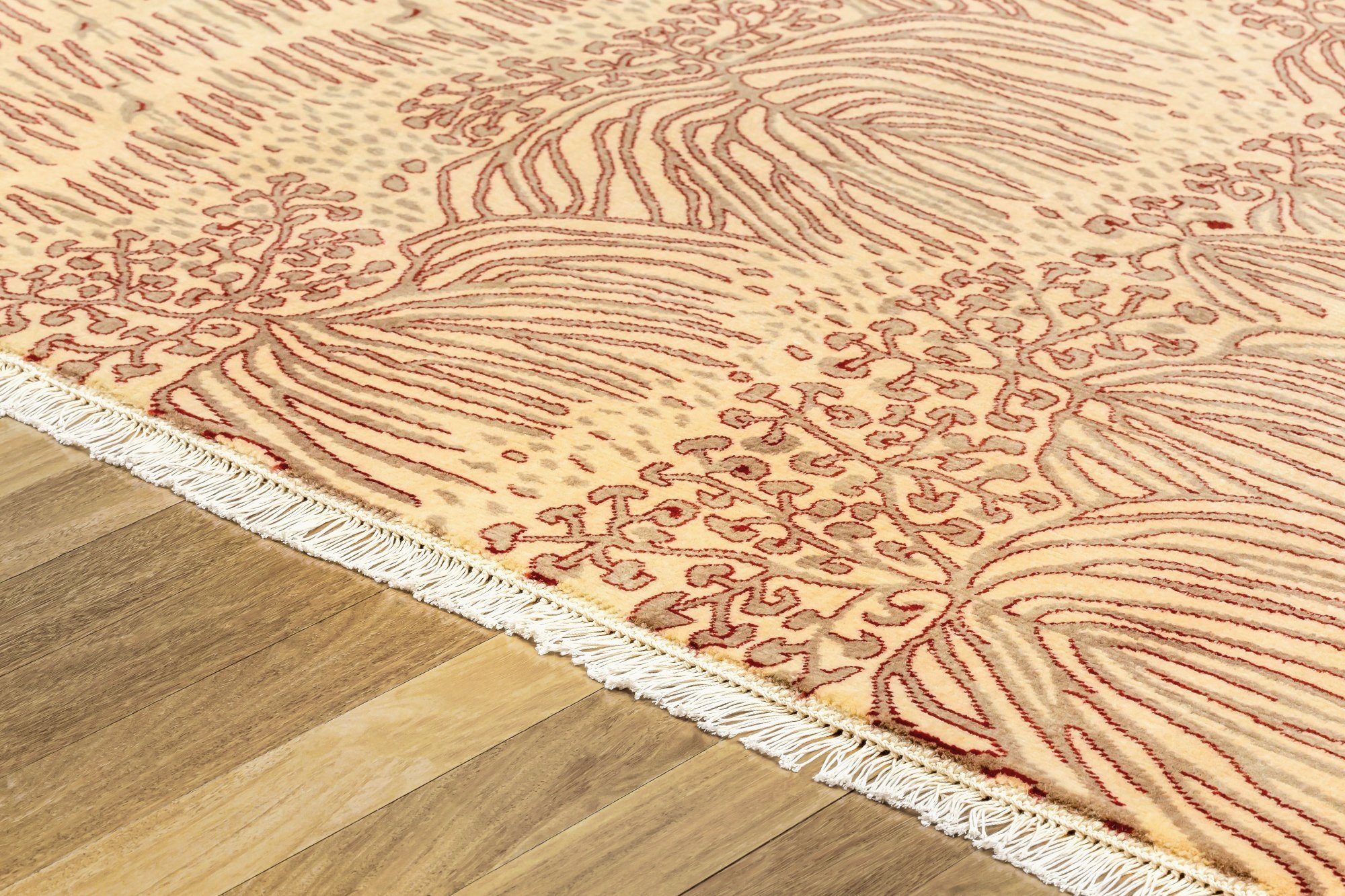From decorating a space to defining a zone, a rug is the ultimate style tool. It is an important building block for creating a cohesive space. It can anchor a room and easily infuse it with personality and taste.
The journey from the living room to the hallway with “Metro”
Metro | Runner
In the history of rug making, there has been a consistent trend of creating designs that can be transferred between different shapes. However, when changing the shape of a rug, such as from a square to a rectangle, it is essential to maintain its dialogue with the environment.
Rectangles, particularly runners, present a unique challenge. These shapes are often defined by their surroundings and are typically placed in narrow, dimly lit areas. While traditional rug designs from the Middle East have often used borders and small motifs to create balance, modern designers find themselves with a more limited toolkit to enhance a room's aesthetics.
Bidwill's work combines European and British modernist painting traditions with contemporary awareness. She has mastered the art of translating her paintings into rugs. "Metro" was one piece from her first collection that caught my eye. Colours and abrash techniques in the tufting stage made this work come alive, instantly capturing the audience's attention.
Details | Metro /Runner
Her design for a runner rug was originally inspired by "Metro". She introduced a lively hue of colours into the composition, manipulating the audience's tendencies to predict the movement of shapes and colours. Along the way, the design surprises your eyes with clever tricks. There are sharp, end-pointed shapes that appear to need completion at the rug's edges. However, your eyes are misled by well-placed shapes that open your view to a more expansive space.
Bridget's style approach to rug-making adds a fresh aesthetic to any room or hallway. Her ability to weave her creativity into these complex designs demonstrates a profound understanding of both her canvas and her craft. Whether preserving the traditional dialogue between the rug and its environment or introducing new and bold elements, Bridget's work represents a vivid and refreshing take on an age-old art form.
Brushstrokes and Knots: Marina Strocchi's Artistic Journey Unveiled in a Rug
Marina Strocchi is an unconventional artist known for her tapestry-like paintings that bridge the boundaries between figurative and abstract representation. Her artistic journey, sparked by travel, has shaped her unique style of intense colour and perspectives capturing the harsh Australian light and its effects on forms in the landscape . Strocchi's art evolved to incorporate narrative elements, symbolic representations, and a map-like perspective. In her recent works, she emphasises pattern-making and rhythmic energy, creating paintings that leave a lasting impression.
“Top-end Mangroves” painting by Marina Strocchi, detail
Translating Strocchi's Art into a Rug:
The discipline of hand-knotted rugs on looms offered boundless opportunities to
recreate Marina Strocchi's intricate linework and delicate brushwork. However,
transforming her work "Top-end Mangroves" into a rug also presented several challenges.
The subtle colour shifts, crucial to the composition, required a solution that could
mimic the fluidity of watercolour. To achieve this, the traditional method of tie-dye
was employed, using yarn colours that were tonally close to each other. This resulted
in a stunningly understated, earthy backdrop reminiscent of Strocchi's original
painting.
Preserving Motif Movements and Definition:
Capturing the movements of each motif within Strocchi's landscapes was paramount in the rug's recreation. To ensure accuracy, the knot density was increased, allowing every motif and element to be clearly defined. Each motif was given its own space, existing independently, just as they do in Strocchi's original work. By meticulously preserving these elements, the rug became a faithful representation of the artist's vision, inviting viewers to explore the intricate details and symbolism within.
The Dance of Colour:
Among the limited colour palette used in Strocchi's work, an earthy bronze-red hue stood out, threading its way through every object and giving them life. This captivating colour became a unifying thread, enhancing the vibrancy and movement of the motifs within the rug. The dance of colour brought Strocchi's artwork to life in the medium of the rug. This recalled the energy and vitality of her original paintings.
The translation of her work into a hand-knotted rug posed challenges that were met with creativity and
meticulous craftsmanship. The resulting rug captures the essence of Strocchi's.








